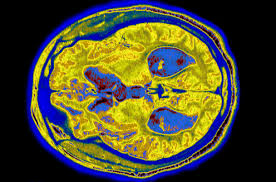Alzheimer’s disease, a devastating condition affecting memory and cognitive function, has long challenged scientists and families alike. With no cure and limited treatments, the disease impacts nearly 7 million Americans today, a number projected to nearly double by 2050. However, a wave of optimism is sweeping through the medical community as a groundbreaking Alzheimer’s treatment enters its final approval phase, bringing hope to patients and their loved ones. This development could mark a turning point in the fight against this neurodegenerative disease, offering a chance to slow its progression and improve quality of life.

A New Era in Alzheimer’s Research
Recent advancements in Alzheimer’s research have focused on targeting the disease’s underlying causes rather than just managing symptoms. Traditional treatments, such as cholinesterase inhibitors, provide temporary relief but do not address the root issues, like the buildup of amyloid plaques and tau tangles in the brain. These protein deposits disrupt communication between brain cells, leading to memory loss and cognitive decline.
The new treatment, currently in the final stages of regulatory review, takes a different approach. It is an anti-amyloid therapy designed to clear harmful amyloid plaques from the brain, potentially slowing the disease’s progression in its early stages. Unlike earlier drugs that offered limited benefits, this therapy has shown promising results in clinical trials, sparking excitement among researchers and patients.

What Makes This Treatment Different?
The treatment, developed by a leading pharmaceutical company, is part of a class of monoclonal antibodies that target amyloid beta, a protein that forms sticky plaques in the brains of Alzheimer’s patients. By binding to these plaques, the drug helps the body’s immune system remove them, reducing their toxic effects on brain cells. In phase III clinical trials, the therapy demonstrated a significant reduction in cognitive decline compared to a placebo, with some patients maintaining daily functioning for longer periods.
Dr. Sarah Thompson, a neurologist specializing in neurodegenerative diseases, explains, “This is a game-changer. For the first time, we’re seeing a treatment that doesn’t just mask symptoms but actively works to slow the disease process. It’s not a cure, but it’s a critical step forward.” The drug’s ability to target amyloid plaques early in the disease—before irreversible brain damage occurs—makes it particularly effective for patients with mild cognitive impairment or early-stage Alzheimer’s.
The treatment is administered through intravenous infusions every few weeks, requiring regular monitoring to manage potential side effects, such as brain swelling or small bleeds, known as amyloid-related imaging abnormalities (ARIA). While these risks exist, trial data suggests they are manageable with proper care, and most patients tolerate the therapy well.
The Road to Approval
The journey to this point has been long and complex. Developing an Alzheimer’s treatment involves years of research, rigorous testing, and collaboration between scientists, pharmaceutical companies, and regulatory bodies. The therapy entered its final approval phase after completing multiple rounds of clinical trials, which involved thousands of participants across the globe. These trials assessed the drug’s safety, efficacy, and impact on patients’ quality of life.
Regulatory agencies, such as the U.S. Food and Drug Administration (FDA) and the European Medicines Agency (EMA), are now reviewing the trial data to determine whether the treatment meets the necessary standards for widespread use. The final approval phase, often called the “last hurdle,” involves a detailed evaluation of the drug’s benefits versus its risks. If approved, the therapy could be available to patients as early as next year, offering a new option for those in the early stages of Alzheimer’s.
The FDA has granted the drug “priority review” status, a designation reserved for treatments that address significant unmet medical needs. This accelerates the review process, reflecting the urgent need for effective Alzheimer’s therapies. Posts on social media platforms have echoed this urgency, with advocates and families expressing hope that approval will bring relief to millions affected by the disease.

Challenges and Considerations
While the potential approval is a milestone, challenges remain. Alzheimer’s is a complex disease, and not all patients respond to anti-amyloid therapies in the same way. Genetic factors, such as the presence of the APOE4 gene, can influence the drug’s effectiveness and the likelihood of side effects. Additionally, the treatment is most effective in the early stages, meaning timely diagnosis is critical. Unfortunately, many patients are diagnosed only after significant brain damage has occurred, limiting the therapy’s benefits.
Cost is another concern. Similar Alzheimer’s drugs, like lecanemab and donanemab, have carried high price tags, raising questions about accessibility. The new treatment’s cost is not yet public, but experts anticipate it will require substantial investment from healthcare systems and insurers. Advocacy groups are pushing for policies to ensure the drug is affordable and accessible, especially for underserved communities disproportionately affected by Alzheimer’s.
Dr. Thompson emphasizes the need for a holistic approach: “This drug is a breakthrough, but it’s not a standalone solution. We need better diagnostic tools, increased awareness, and support for caregivers to make a real difference.” Research into complementary therapies, such as anti-tau vaccines and lifestyle interventions, is also ongoing, with the hope of creating a multi-faceted strategy to combat Alzheimer’s.
The Human Impact
Beyond the science, the potential approval of this treatment carries profound implications for patients and their families. Alzheimer’s not only affects memory but also erodes independence, relationships, and identity. For those in the early stages, the possibility of delaying these losses is life-changing.
Take the story of Maria, a 62-year-old retired teacher diagnosed with mild cognitive impairment last year. “When I got the diagnosis, I felt like my world was collapsing,” she says. “But hearing about this new treatment gives me hope. Even if it buys me a few more years with my grandkids, that’s everything.” Maria’s story reflects the experiences of millions who are grappling with the emotional and practical challenges of Alzheimer’s.
Caregivers, too, stand to benefit. The disease places immense strain on families, with many caregivers reporting burnout and financial hardship. A treatment that slows disease progression could reduce this burden, allowing loved ones to maintain their roles as partners, parents, or friends for longer.
Looking Ahead
As the medical community awaits the final decision, the mood is one of cautious optimism. The treatment’s approval would mark a historic moment in Alzheimer’s care, but it is just one piece of a larger puzzle. Scientists are already exploring next-generation therapies, including vaccines and drugs targeting other aspects of the disease, such as inflammation and tau protein tangles. Innovations like blood-based diagnostic tests could also make early detection more accessible, ensuring more patients can benefit from treatments like this one.
For now, the focus is on the final approval phase. If successful, the therapy could redefine how Alzheimer’s is managed, offering a lifeline to those facing a once-untreatable disease. Families, advocates, and researchers are united in their hope that this breakthrough will pave the way for a future where Alzheimer’s no longer steals memories and moments.
Must Read :- Gen Z Is Bringing Back 2000s Fashion Aesthetics Through Instagram Reels





